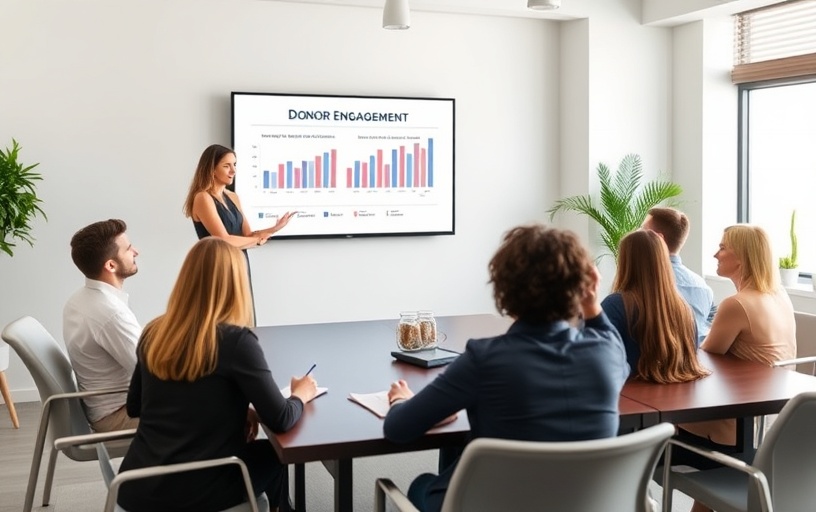Creating a fundraising plan that stands the test of time isn't just about setting ambitious goals—it's about building a strategic framework that grows with your organization, adapts to changing circumstances, and consistently delivers results. After helping hundreds of nonprofits raise over $50 million, we've identified the key elements that separate thriving organizations from those that struggle year after year.
The Reality of Nonprofit Fundraising
of nonprofits don't have a written fundraising plan
struggle with donor retention year over year
more likely to meet goals with a strategic plan
Step 1: Build Your Foundation
Define Your Mission-Driven Case for Support
Your case for support is the cornerstone of everything you do. It should clearly articulate not just what you do, but why it matters and what specific impact donors can create through their giving.
Essential Elements:
- Problem statement with compelling statistics
- Your unique solution and approach
- Specific, measurable impact outcomes
- Clear call to action for supporters
Set SMART Fundraising Goals
Generic goals like "raise more money" don't drive action. Your goals need to be Specific, Measurable, Achievable, Relevant, and Time-bound.
❌ Weak Goal
"Increase donations this year"
✅ SMART Goal
"Raise $250,000 from 500 donors by December 31st to fund our youth mentorship program"
Step 2: Diversify Your Revenue Streams
Sustainable fundraising means never putting all your eggs in one basket. The most resilient organizations have multiple, complementary revenue streams that work together to create stability and growth.
Individual Giving
- • Annual giving campaigns
- • Monthly donor programs
- • Major gift prospects
- • Planned giving initiatives
Grant Funding
- • Foundation grants
- • Government funding
- • Corporate grants
- • Capacity building grants
Corporate Partnerships
- • Sponsorship opportunities
- • Employee giving programs
- • Cause marketing partnerships
- • In-kind donations
Events & Campaigns
- • Signature fundraising events
- • Peer-to-peer campaigns
- • Online crowdfunding
- • Challenge campaigns
Pro Tip: The 40-30-20-10 Rule
Aim for 40% individual giving, 30% grants, 20% corporate partnerships, and 10% events. This balance provides stability while allowing for growth opportunities.
Step 3: Map Your Donor Journey
Sustainable fundraising isn't about constantly finding new donors—it's about building lasting relationships that deepen over time. Map out how supporters move from awareness to advocacy.
The Sustainable Donor Journey
Awareness
Discovery through marketing and outreach
Interest
Engagement with content and mission
First Gift
Initial donation and welcome experience
Retention
Ongoing stewardship and engagement
Advocacy
Champions who bring others to your cause
Key Touchpoints for Each Stage
Awareness & Interest
Social media content, blog posts, community events, referrals from existing supporters
First Gift Experience
Immediate thank you, welcome series, impact report, invitation to learn more
Ongoing Stewardship
Regular updates, exclusive content, volunteer opportunities, feedback requests
Deepening Engagement
Personal meetings, advisory roles, planned giving conversations, peer recruitment
Step 4: Build Systems That Scale
The difference between organizations that plateau and those that grow exponentially lies in their systems. Sustainable fundraising requires processes that work whether you have 100 donors or 10,000.
Data Management
- CRM system for donor tracking
- Regular data hygiene practices
- Segmentation for targeted outreach
- Analytics and reporting dashboards
Communication Workflows
- Automated welcome sequences
- Thank you and receipt processes
- Regular newsletter schedules
- Follow-up reminder systems
Sample Annual Fundraising Calendar
Q1: Foundation
- • Strategic planning
- • Donor research
- • Grant applications
Q2: Growth
- • Spring campaigns
- • Corporate outreach
- • Event planning
Q3: Engagement
- • Summer events
- • Donor cultivation
- • Impact reporting
Q4: Peak Season
- • Year-end appeals
- • Giving Tuesday
- • Thank you campaigns
Step 5: Track What Matters
You can't improve what you don't measure. Sustainable fundraising requires tracking the right metrics and using data to make informed decisions about your strategy.
Essential Fundraising Metrics
Percentage of donors who give again
Total revenue ÷ number of gifts
Fundraising expenses ÷ total raised
Predictable monthly giving income
Prospects who become donors
Total value of donor relationship
Monthly Review Checklist
Financial Performance
- Total revenue vs. goal
- Revenue by source
- Expense ratios
- Cash flow projections
Donor Engagement
- New donor acquisition
- Donor retention trends
- Engagement rates
- Pipeline activity
Ready to Get Started?
This Week
Audit your current fundraising efforts and identify gaps
This Month
Create your donor journey map and set SMART goals
Next Quarter
Implement systems and start tracking key metrics

